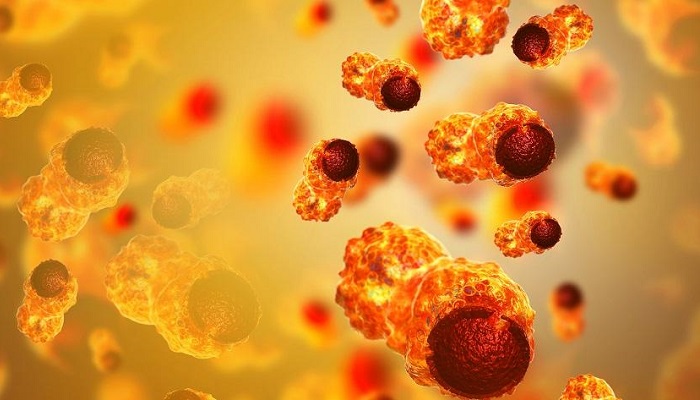The University of Freiburg researchers have found out that the release of prometastatic factors is influenced by the skeleton of the cell, known as actin.
As per a research team that was led by Dr. Robert Grosse and Dr. Carsten Schwan, the actin molecules’ transportation with the skeleton of the cell is one of the major influencing factors when it comes to the spread of cancer metastatically.
Metastases take place when the cancer cells leave the primary tumour and spread across the body. In order to make this happen, the cells have to initially break contact with their neighbouring cells and then move to other tissues. The entire process is aided by the signalling molecules that get released by the cancerous cells, which thereby increase the tumour’s malignancy.
Advance Science is the journal where this study has been published.
Actin filaments are a part of the skeleton of the cell and happen to be very important for stability as well as mobility. The actin forms a network, which is built and broken down because of either the addition or detachment of the building blocks right at the filament’s end.
This process happens to be regulated with the aid of other molecules known as formins. The network of Actin aids in the movement of cells across the body, typically for instance in wound closure and the same process also takes place in the cancer spreading cells. Actin also helps in the transportation of substances that happen to be within the cells.
The researchers went on to discover that the network of actin brings about the release of prometastatic elements. In the research the scientists made use of high-resolution microscopy that tracked the movement of the transport vesicles which were individual inside the living cancer cells. As per Dr. Grosse, they observed that vesicles that were loaded with ANGPTL-4 were conveyed to the cell periphery by means of localised and dynamic polymerization of actin filaments.
Notably, ANGPTL-4 is the one that promotes metastasis formation across various cancer types and happens to be a significant premetastatic factor.
The microscopic observation of the researchers as well as their genetic analysis led them to conclude that vesicle movement was controlled through the formin-like molecule FMNL2 by way of polymerization, which describes the actin filament elongation within the vesicle.
Grosse says that they already knew that the surge in FMNL2 activity had prometastatic effects across many types of tumours and that, in their current work, they could now demonstrate a significant underlying process as well as connect to the signalling pathway pertaining to TGF-beta signalling.
The scientists opine that this knowledge can be very well used when it comes to tumour diagnosis and therapy. The findings could very well aid in the creation of an antibody capable of indicating the existence of FMNL2 that is active and aiming at phosphorylated FMNL2. The research is a part of a study series from CIBSS, which is on a quest to achieve an absolute understanding of biological signalling processes. The scientists would do better to gauge the individual molecules’ and cells’ interactions, as well as the processes that take place across organisms and organs. As per the researchers, the gained knowledge will be used in developing strategies to control signals in a more targeted way. The new tech can also enable them to get new insights when it comes to research and create innovations in medicine and plant sciences.



















